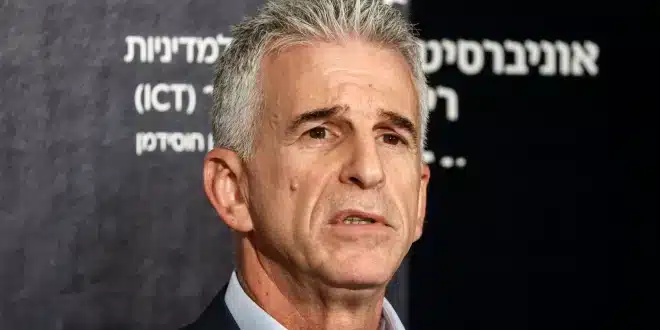After months of impasse in efforts to secure a Gaza ceasefire, Israeli Prime Minister Benjamin Netanyahu agreed to send a delegation for negotiations aimed at releasing hostages taken during Hamas’s attack on October 7, which ignited the ongoing conflict.
A source informed about the discussions stated that an Israeli team, led by intelligence chief David Barnea, was heading to Doha to engage with the Qatari prime minister to facilitate a potential agreement in Gaza.
The United States welcomed these developments, which followed a conversation between Netanyahu and U.S. President Joe Biden. This came after Hamas suggested it had “ideas” to end the nearly nine-month conflict.
A senior U.S. official, speaking anonymously, described it as a “pretty significant opening.”
The Biden administration has been working diplomatically to convince Hamas to agree to a ceasefire plan proposed by the president. Biden’s strong support for Israel has strained relations with some of his support base ahead of the upcoming election in November.
### Fighting in Gaza City
Gaza’s civil defense agency reported that Israeli strikes on Thursday resulted in the deaths of seven people, including five in a school in Gaza City, in the north of the besieged territory.
Fighting continued fiercely in the Shujaiya neighborhood of Gaza City and in Rafah, near the southern border with Egypt, where an Israeli evacuation order has raised concerns about a major new offensive.
Since Monday’s evacuation order, tens of thousands of Palestinians have fled from eastern areas of Rafah and nearby Khan Yunis.
The United Nations estimates that 1.9 million people are displaced within Gaza, with approximately nine out of ten residents having been uprooted at least once since the conflict began.
Andrea De Domenico, head of the UN humanitarian office in the Palestinian territories, emphasized the personal toll behind these statistics: “Behind these numbers, there are people… with fears and grievances. They probably had dreams and hopes; but less and less so today, I fear, unfortunately.”
### Evacuation Order
The United Nations reported that Israel’s evacuation order affected up to 250,000 people, covering 117 square kilometers, or about one-third of Gaza’s area.
The core conflict continued with intense gun battles, airstrikes, and shelling in Gaza City for the eighth consecutive day.
The Israeli military stated that troops had “destroyed tunnel routes in the area and eliminated dozens of terrorists in close-quarters combat with tank fire and aerial strikes.”
### ‘Maelstrom of Human Misery’
Israel has faced global criticism for the high civilian death toll, the harsh siege, and the widespread destruction in Gaza.
Sigrid Kaag, the UN humanitarian coordinator for Gaza, called for an end to the “maelstrom of human misery” this week.
Netanyahu has maintained that Israel’s goals are to dismantle Hamas and secure the release of remaining hostages.
President Biden, under increasing domestic pressure over U.S. support for Israel, proposed a six-week truce and an exchange of hostages for Palestinian prisoners in late May.
Progress has been limited, but on Wednesday, Hamas indicated it was in communication with officials in Qatar, Egypt, and Turkey to explore options for ending the conflict.
Hamas’s Qatar-based political leader, Ismail Haniyeh, confirmed contact with mediators in Qatar and Egypt, discussing potential agreements.
Netanyahu’s office acknowledged that “Israel is evaluating the (Hamas) remarks and will convey its reply to the mediators.”
A major obstacle remains Hamas’s demand for a permanent cessation of fighting, a condition that Netanyahu and his far-right coalition partners firmly oppose.


